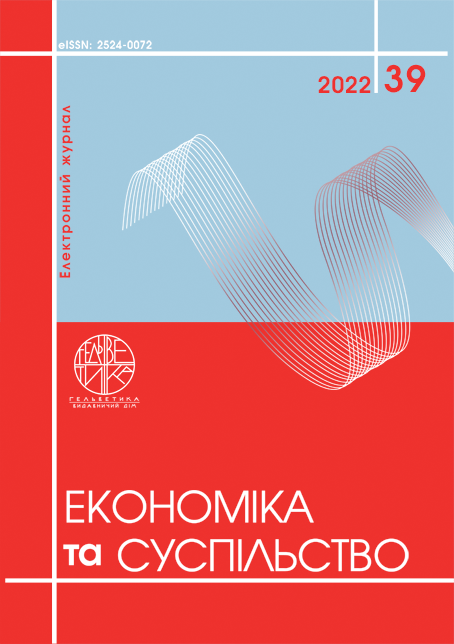TOUTISM BRANDING OF NATIONAL NATURAL PARKS OF LVIV REGION
Abstract
Article is based on a study of the tourism branding of national nature parks. Branding of national parks is a young phenomenon. Currently, there are a small number of comprehensive and functioning brands of national nature parks. Due to the growing popularity of ecotourism including travel to national nature parks, caused by the COVID-19 pandemic, competition between national nature parks is growing. Thus, the presence of the national nature parks brand and correct work with branding tools helps the park emphasize itself against competitors and attract more visitors. In 2022, the number of national nature parks has reached more than four thousand units in the world. Because of the large number of places where tourists can go, there is a need to stand out from the competition, show strengths of national nature parks and create an image that will be understandable to the visitor and easy to remember. More and more national nature parks are working on developing their own branding – a set that includes graphics (logo, color scheme, corporate fonts, etc.) in combination with the national nature park corporate policy, its historical and geographical features, biodiversity, cultural monuments, etc. In today’s world, branding allows national nature park to increase the level of trust of tourists, to form a chain of cooperation with them and make each visitor part of its team, giving the opportunity, for example, to conduct discussions on social networks, participate in events organized in the park, participate in the surveys about the quality of infrastructure and the level of service in the national nature park, etc. The article is devoted to the study of tourism branding on the example of domestic national nature parks, its impact on tourists. The activity of national nature parks of Lviv region is characterized. Tourism branding main tools and tourism branding experience of Ukrainian national parks are analyzed. Based on the results of a survey of visitors to national nature parks, a new tourist brand is developed for the Boykivshchyna National Nature Park in the Lviv region.
References
Брендбук Природно-заповідного фонду України. URL: https://mepr.gov.ua/files/docs/Brandbook.pdf
Новий веб-сайт НПП «Сколівські Бескиди». URL: http://skole.space/ua/home.html
Branding of American Marketing Association. URL: https://www.ama.org/topics/branding/
Munar A.M. (2011). Tourist-Created Content: Rethinking Destination Branding, 8–12.
Noti E. (2013). Web 2.0 and its influence in the tourism sector, 115 119.
Gnoth J. (2007). Branding tourism destinations: a research agenda.
Brent J.R. Ritchie, Robin J.B. Ritchie (1998). The branding of tourism destination.
National Park Service. URL: https://www.nps.gov/index.htm
Nickerson N., Moisey R. (1999). Journal of Vacation Marketing, 5 (3), 217–226.
Balakrishnan M., Nekhili R., Lewis C. (2008). Destination Brand Components, 5–8.
Parks by Brian Kelley. URL: https://www.goodreads.com/book/show/52202395-parks
Brandbook of the Nature Reserve Fund of Ukraine. Available at: https://mepr.gov.ua/files/docs/Brandbook.pdf (in Ukrainian)
New website of «Skole Beskydy» NNP. Available at: http://skole.space/ua/home.html (in Ukrainian)
Branding of American Marketing Association. Available at: https://www.ama.org/topics/branding/
Munar A.M. (2011). Tourist-Created Content: Rethinking Destination Branding, 8–12.
Noti E. (2013). Web 2.0 and its influence in the tourism sector, 115 119.
Gnoth J. (2007). Branding tourism destinations: a research agenda.
Brent J.R. Ritchie, Robin J.B. Ritchie. (1998). The branding of tourism destination.
National Park Service. Available at: https://www.nps.gov/index.htm.
Nickerson N., Moisey R. (1999). Journal of Vacation Marketing, 5 (3), 217–226.
Balakrishnan M., Nekhili R., Lewis C. (2008). Destination Brand Components, 5–8.
Parks by Brian Kelley. Available at: https://www.goodreads.com/book/show/52202395-parks.


